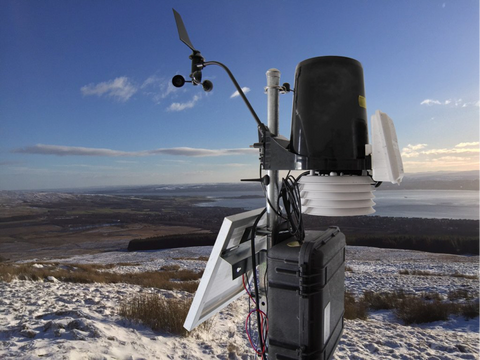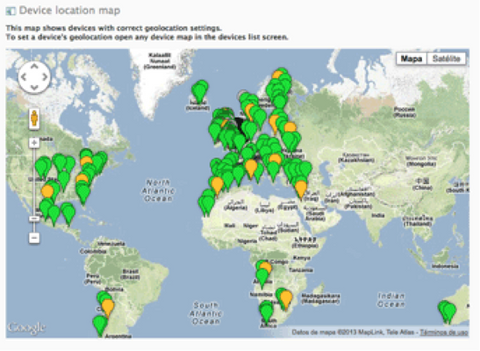WindLogger GSM Weather Station: Cloud-Connected Site Monitoring
GSM Weather Station: Cloud-Connected Site Monitoring
Weather monitoring is a key element of scientific research and renewable energy projects, as well as a useful tool for keeping construction sites safe. However, these are applications that often involve working at remote sites, so any monitoring solution that is deployed must be as autonomous as possible.
Our GSM Weather Station is a high-end solution that comes fully integrated with cloud technology, keeping data accessible and safe: your project team can connect to our cloud database from any location, and data is safeguarded from any adverse situation that could occur on-site.

Our professional weather stations are pre-configured for a wide variety of sensor inputs, minimizing the time spent by your team setting up the unit on-site. The GSM Weather Station by WindLogger supports up to 14 input channels:
- 4 anemometers
- 2 wind vanes
- 4 digital channels
- 4 analog channels
Importance of Having Access to Real-Time Data
Under the traditional approach to weather monitoring at remote locations, a weather station would be left on-site logging data for a certain amount of time, and the project team could only hope that it would not malfunction or suffer unexpected damage. After the measurement run was completed, the project team would return to the site to retrieve the unit and download all of its data for analysis. This process may involve trial-and-error, since there is no way to know if data is being logged properly until it is downloaded.
These limitations are eliminated with GSM communications, which allow data to be accessed from anywhere and at any time as long as an Internet connection is available. The GSM weather station by WindLogger is permanently connected to our state-of-the-art cloud servers, and site measurements are backed up every 10 minutes, becoming immediately available. Even in a worst-case scenario, no more than 10 minutes of measured data will be lost.
Teams carrying out a research project or a renewable energy feasibility study can simply log in to our LeNET web platform, where the latest data is displayed. This offers a broad range of benefits:
- The analysis can start as soon as the first measurement results are updated. There is no need to wait for the entire measurement run to be completed.
- Abnormal operating conditions can be detected and, if necessary, the project team can visit the site to make adjustments.
- The current state of the battery is also uploaded to the cloud, which allows the project team to keep track of available power. In fact, the unit can be equipped with a solar PV panel to recharge its own battery and operate indefinitely.
Other than accessibility, GSM communications also enhance data security. If there is any event that compromises access to the files currently stored in the unit, data is not lost because it’s backed up in our cloud data servers every 10 minutes.

The GSM Weather Station can be a potent tool for use by weather institutions or other organizations that carry out research, since their activities often involve working at remote locations. The budget of a research project can be allocated more effectively with the use of a monitoring tool that offers access to real-time results and eliminates geographic barriers. We also offer the Mini GSM Wind Monitoring System, available at a lower price, in case your project does not require the full weather station.







